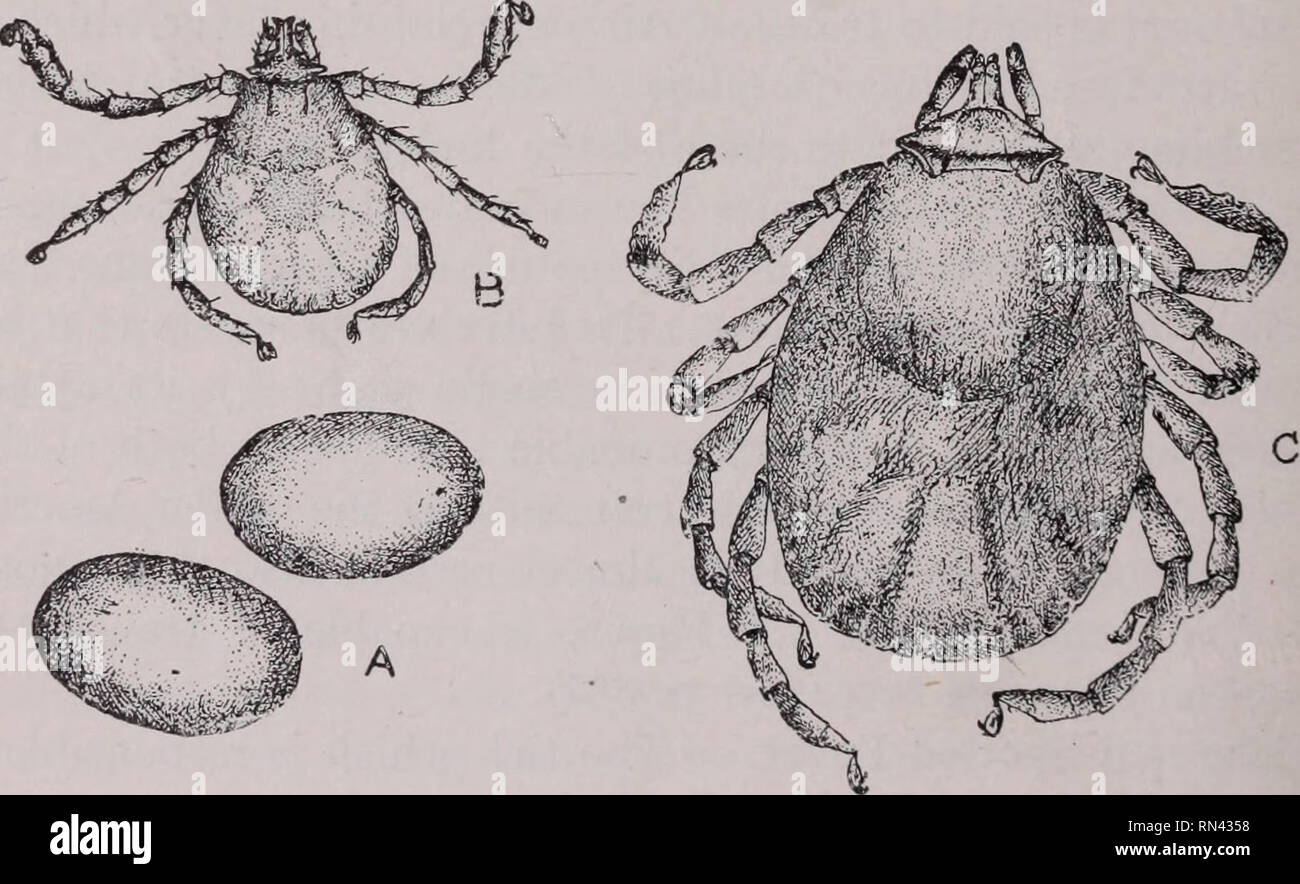. Animal parasites and human disease. Insect Vectors; Parasites; Parasitic Diseases; Medical parasitology; Insects as carriers of disease. Fig. 156. Spotted fever tick, Dermacentor venustus, male ($) and female (?). X 12.. Fig. 157. Development of spotted fever tick, Dermacentor venustus; A, eggs; B, larva; C, nymph. X 30. in the country where the ticks occur, especially squirrels of various kinds. Usually the larvae, and the nymphs also, attach themselves about the head and ears of their host. After a few days the larvae drop, transform into nymphs (Fig. 157C) and. Please note that these imag

Image details
Contributor:
Library Book Collection / Alamy Stock PhotoImage ID:
RN4358File size:
7.2 MB (337.8 KB Compressed download)Releases:
Model - no | Property - noDo I need a release?Dimensions:
2022 x 1236 px | 34.2 x 20.9 cm | 13.5 x 8.2 inches | 150dpiMore information:
This image is a public domain image, which means either that copyright has expired in the image or the copyright holder has waived their copyright. Alamy charges you a fee for access to the high resolution copy of the image.
This image could have imperfections as it’s either historical or reportage.
. Animal parasites and human disease. Insect Vectors; Parasites; Parasitic Diseases; Medical parasitology; Insects as carriers of disease. Fig. 156. Spotted fever tick, Dermacentor venustus, male ($) and female (?). X 12.. Fig. 157. Development of spotted fever tick, Dermacentor venustus; A, eggs; B, larva; C, nymph. X 30. in the country where the ticks occur, especially squirrels of various kinds. Usually the larvae, and the nymphs also, attach themselves about the head and ears of their host. After a few days the larvae drop, transform into nymphs (Fig. 157C) and. Please note that these images are extracted from scanned page images that may have been digitally enhanced for readability - coloration and appearance of these illustrations may not perfectly resemble the original work.. Chandler, Asa C. (Asa Crawford), 1891-1958. New York, J. Wiley & Sons; London, Chapman & Hall